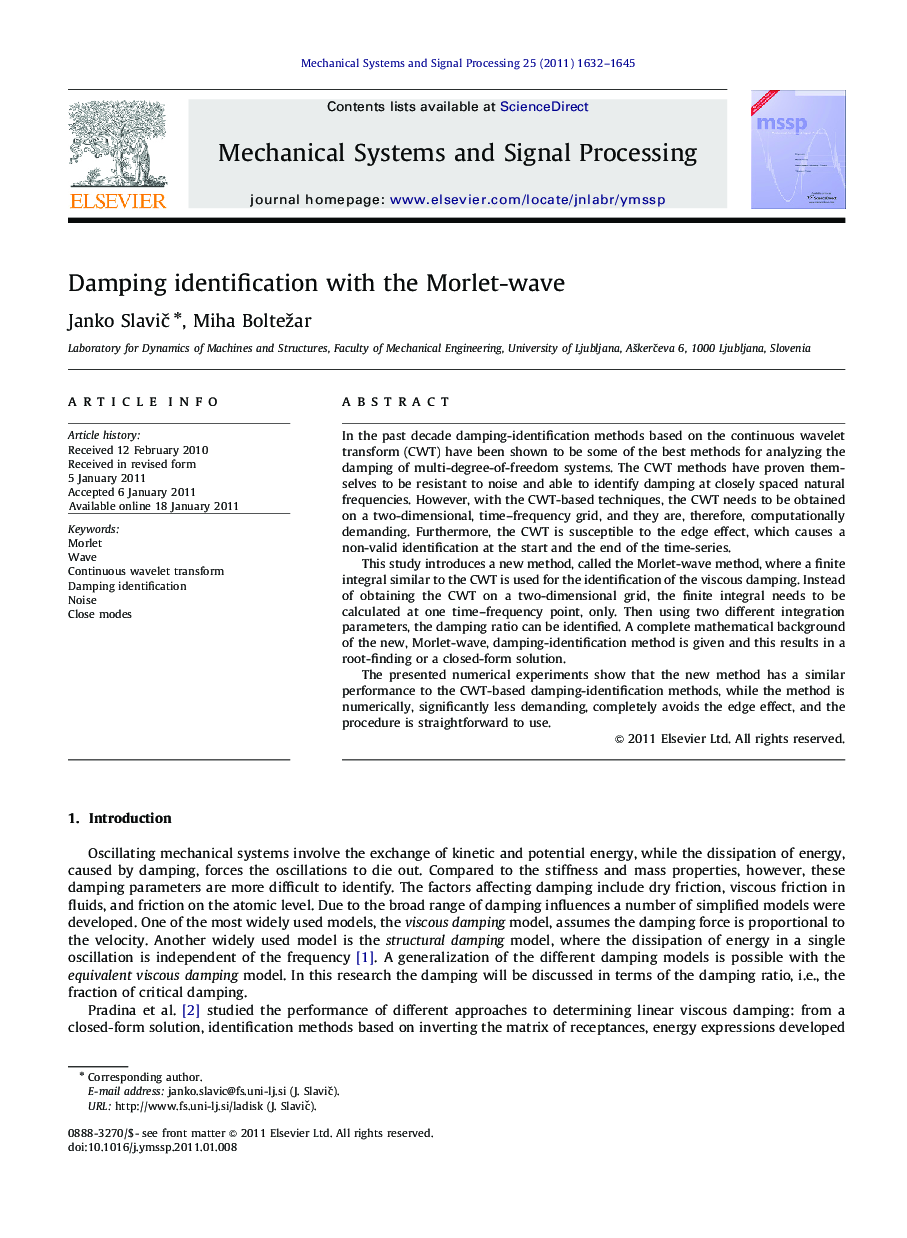| Article ID | Journal | Published Year | Pages | File Type |
|---|---|---|---|---|
| 559652 | Mechanical Systems and Signal Processing | 2011 | 14 Pages |
In the past decade damping-identification methods based on the continuous wavelet transform (CWT) have been shown to be some of the best methods for analyzing the damping of multi-degree-of-freedom systems. The CWT methods have proven themselves to be resistant to noise and able to identify damping at closely spaced natural frequencies. However, with the CWT-based techniques, the CWT needs to be obtained on a two-dimensional, time–frequency grid, and they are, therefore, computationally demanding. Furthermore, the CWT is susceptible to the edge effect, which causes a non-valid identification at the start and the end of the time-series.This study introduces a new method, called the Morlet-wave method, where a finite integral similar to the CWT is used for the identification of the viscous damping. Instead of obtaining the CWT on a two-dimensional grid, the finite integral needs to be calculated at one time–frequency point, only. Then using two different integration parameters, the damping ratio can be identified. A complete mathematical background of the new, Morlet-wave, damping-identification method is given and this results in a root-finding or a closed-form solution.The presented numerical experiments show that the new method has a similar performance to the CWT-based damping-identification methods, while the method is numerically, significantly less demanding, completely avoids the edge effect, and the procedure is straightforward to use.
